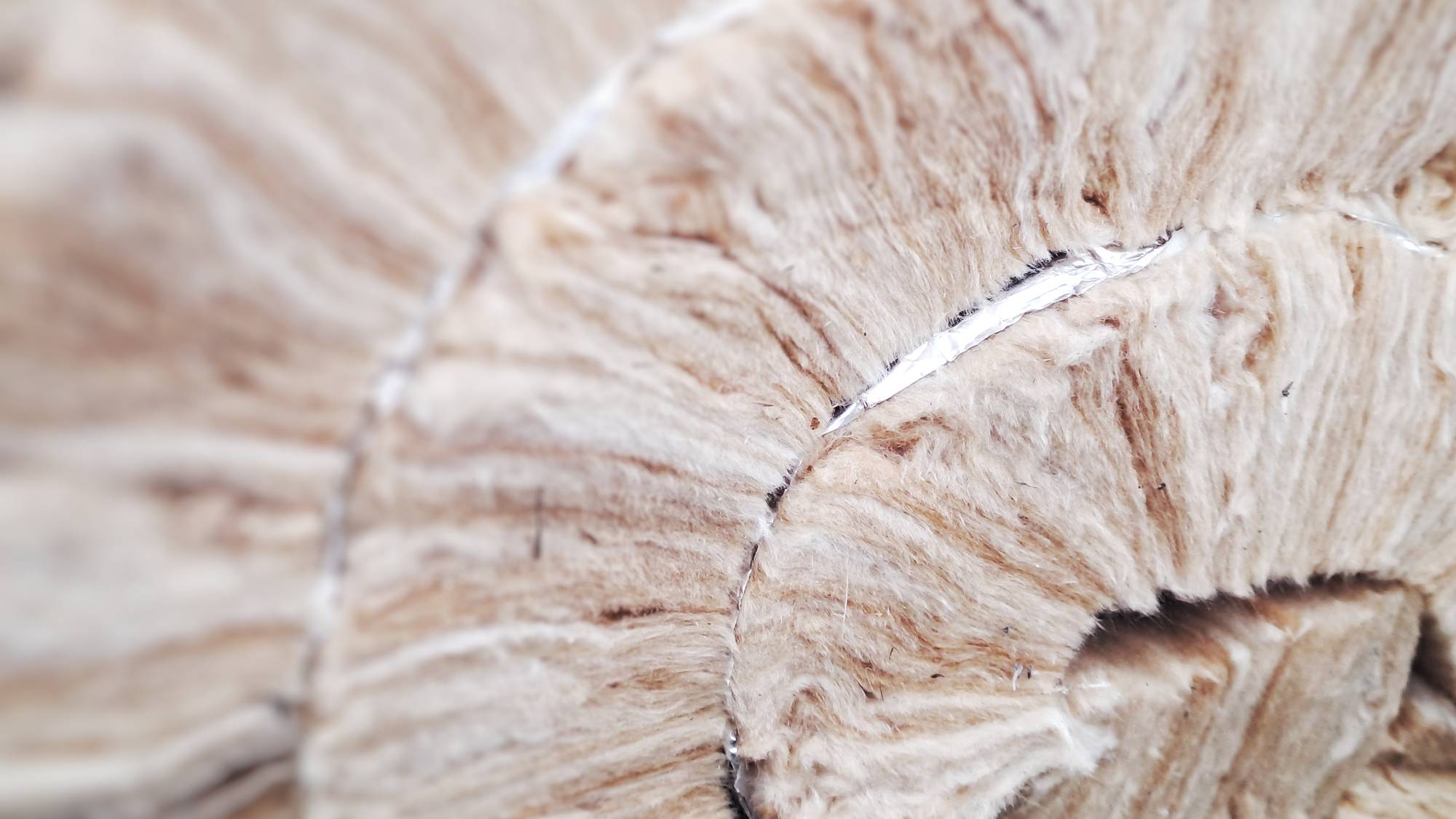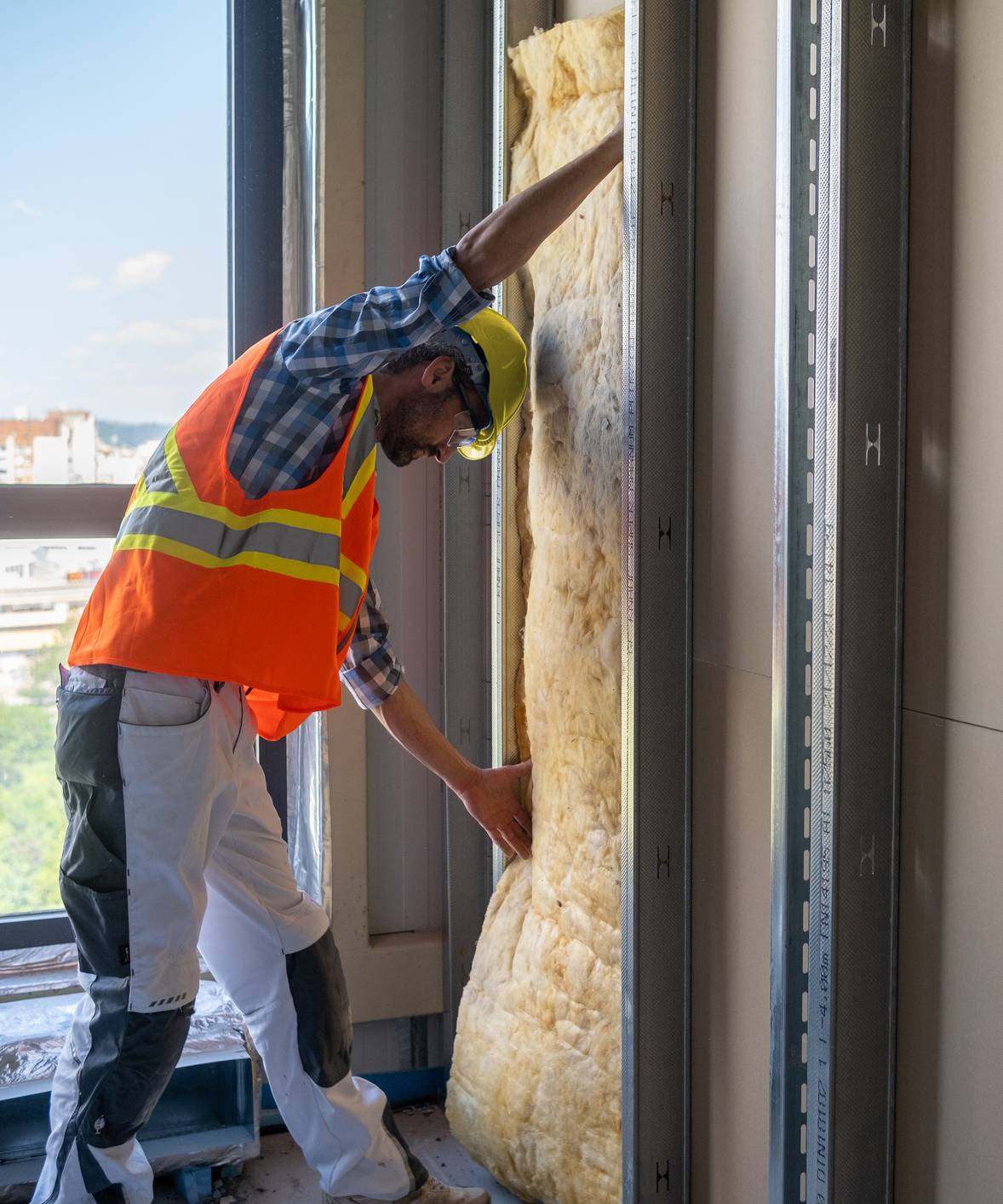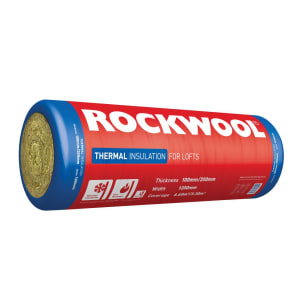
Most of us only deal with home insulation a few times in a lifetime, so many of the materials used to insulate buildings are little known to the average person.
Affordably priced and familiar to most installers, mineral wool is one of the most popular categories.
“There are a few main types of mineral wool insulation, most commonly glass wool, slag wool and rock wool,” says Clive Holland, property expert and Fix Radio presenter. “Rock wool is made from volcanic rock such as basalt, while glass wool is made primarily from recycled glass, and slag wool is produced from blast furnace slag."
He adds: “All of these types of mineral wool have a similar fibrous texture, but rock wool tends to be denser and more robust, which gives it an edge in several performance areas.”
The processes for manufacturing most mineral wools are broadly similar. Raw material is melted, then spun into fibres which are bound together into an insulation product such as a roll.
We should clarify that ‘Rockwool’ is the brand name of one particular rock wool producer. This is not the only brand making rock wool insulation (originally known as ‘stone wool’), but its name has become a byword for rock wool itself, much like other genericides such as ‘hoover’ for vacuum cleaning and ‘google’ for searching the internet.

Clive Holland is the former host of Cowboy Trap on the BBC. Now a broadcaster on Fix Radio, the UK’s only national radio station for builders and tradespeople, Holland is one of the UK’s leading property and DIY experts.
Which is better: rock wool or other mineral wools?
Thermal insulation
In terms of thermal performance, there’s not much to choose between rock wool and other types of mineral wool such as glass wool.
Bring your dream home to life with expert advice, how to guides and design inspiration. Sign up for our newsletter and get two free tickets to a Homebuilding & Renovating Show near you.
According to insulationgo.co.uk, certain examples of the two types can have the same thermal conductivity, rated at 0.044 W/m·K. However, glass wool is assessed as providing a higher R-value (better resistance to heat flow), at 3.2 m²K/W compared to rock wool’s 2.27 m²K/W.
With that said, thermal insulation performance varies depending on the specific product (and its thickness). An exceptionally insulative rock wool product might outperform the average glass wool insulation when it comes to keeping you cosy. So, it's always worth researching the rated performance of mineral wool insulation products (several are listed here at B&Q) before you choose one.
Winner: other mineral wools such as glass wool (but it’s a close contest)
Acoustic insulation
Holland suggests that rock wool is the superior option for acoustic insulation, with “extremely effective soundproofing performance”.
This is due to the far higher density of material in rock wool insulation, when compared with glass wool especially. One cubic metre of rock wool can weigh as much as 200kg, whereas the same volume of glass wool insulation would tend to weigh no more than 110kg.
“With regard to sound, rock wool excels over glass wool, and all other forms of mineral wool, as an insulating medium,” says Jake Fry, founder of Smallworks.
“This is because its denser fibrous structure absorbs sounds most effectively, leading to the reduction of noises, both by air and also by impact from the other side of the insulated surface.”
Fry recommends choosing rock wool to insulate properties close to sources of unwanted noise, such as flats.
“It’s effective at insulating the space from both higher and lower sound frequencies, whereas a less efficient material such as glass wool would not meet the same soundproofing requirements,” he says.
Winner: rock wool

Jake Fry is the Founder of Smallworks, a home-building company specialising in sustainable small housing.
Durability & safety
“Rockwool’s durability is a big plus – it holds its shape over time and doesn’t sag or deteriorate as easily as other materials,” says Holland.
“It also offers superior fire resistance, which makes it an excellent choice for improving a home’s safety, and it’s extremely effective at managing moisture, which helps prevent damp or mould issues.”
Electrician, Daniel Vasilevski of Pro Electrical, agrees that rock wool has the edge when it comes to fire safety – although many mineral wool products provide some benefits in this regard.
“There are distinct safety advantages of mineral wool, especially basalt-based products [which are an example of rock wool], as it has resistance to both heat and flame spread. This becomes important when running wiring in wall cavities or ceiling spaces.”
Winner: rock wool

Daniel Vasilevski is an electrician, and the Owner and Director of Pro Electrical. The company frequently works alongside insulation installers during home renovations and builds.
Convenience
Mineral wool – including rock wool – is generally considered a relatively easy form of insulation to install. Which product will be simplest to put in place depends on the project.
“Rock wool is denser and holds its shape better than glass mineral wool, and this makes it more stable in running electrical circuits in walls or ceilings – it will not shift as easily, so it gives better conduit and cable support over time,” says Vasilevski.
“But at the same time, because rock wool is denser it becomes a little more difficult to cut or to fit against junction boxes than glass wool, which is softer and more pliable.
“While rock wool has advantages, glass wool will be a bit easier to handle in detailed work,” he adds.
Whichever type of mineral wool insulation you choose, you’ll need to be careful when handling it.
“Always wear gloves, long sleeves, and long trousers to protect your skin, and a dust mask to prevent breathing in fine fibres,” says Holland.
“Poor handling can cause irritation to both skin and airways, so taking basic precautions is essential – particularly for DIYers.”
Winner: varies depending on project specifics
Environmental impact
Neither rock wool nor other mineral wools tend to be particularly eco-friendly, due to the carbon-emmissive processes involved in their manufacture (for most products of these types). However, certain products have lower environmental harms or better mitigations than others.
“Rock wool often incorporates recycled steel slag, which helps reduce waste and makes it one of the more environmentally responsible options on the market,” says Holland.
Meanwhile, Earthwool branded insulation (like these examples sold via Amazon) is a glass wool option made mostly from recycled glass, which gives it a relatively small ecological footprint.
Several insulation materials are regarded as better for the environment than mineral wools of any type. These include cork insulation, sheep wool, straw bales and hemp.
Winner: it depends on the product
Three types of mineral wool to consider:

If you don't like the sound of mineral wool insulation, which can irritate the skin and eyes when touched, there are several low-cost, low-irriation alternatives. This example is made from polyester.
How to choose the right mineral wool insulation for your project
Rock wool slightly outperforms other mineral wools including glass wool when we consider the materials’ thermal performance, acoustic performance, durability and convenience, all together.
“Rock wool stands out for its all-round performance, but the downside is that it’s more expensive than glass wool or slag wool, so for large projects the upfront cost can be a consideration,” says Holland.
“Glass wool, for example, is much cheaper and still provides good thermal insulation, though it doesn’t perform as well in terms of soundproofing or moisture resistance.”
Regardless of its higher price, rock wool remains Holland’s personal recommendation, based on its superior durability and all-round performance. He suggests consulting an expert to find the ideal product for your property.
“If you’re a DIYer, take a few photos of your loft or the area you’re insulating and speak to your local builders’ merchant or DIY outlet – they can help you find the right product for your budget and project,” he says.

FAQs
How is mineral wool insulation used in properties?
Mineral wool insulation is a versatile category of materials, sold in various formats to suit different domestic applications.
It is often used as cavity wall insulation or internal wall insulation, as well as in pitched or flat roofs and as loft insulation. Rock wool, in particular, is popular as a noise-reducing cavity wall insulation material in properties which are near roads or other sources of noise pollution.
Mineral wool pipe insulation is used around pipework to prevent heat loss and freezing.
What are the benefits of installing mineral wool insulation?
Adding mineral wool insulation to floors, walls or other parts of a building can bring structural, energy efficiency and quality of life benefits.
“Mineral wool, in any form, is a great all-rounder for building insulation, providing strong thermal performance, helping to keep heat in during winter and out during summer,” says Holland.
“It also contributes to energy efficiency, cutting your heating bills and carbon footprint. Its soundproofing qualities are another major advantage, and most types provide an added layer of fire safety as they are non-combustible.”
Holland notes that it could be worth investigating your household’s eligibility for a government grant to help with the costs of insulation – especially if your home is not currently insulated.
“Speaking to a local service provider is the best way to check eligibility and get the process started,” he advises.
Feeling the chill? Take a step towards a warmer home with our guides to conservatory winterproofing, economical central heating habits, and how to get maximum heat from a wood-burning stove.
Pete Wise is a freelance writer and keen DIYer from Leeds. Pete's tool reviews have featured in titles including Homebuilding & Renovating, Ideal Home and The Independent. He also writes features and news articles for publications such as The Guardian, BBC Good Food and T3. When he isn't busy writing, Pete can often be found at libraries, pubs and live music venues. He finds tile-cutting strangely zen.



